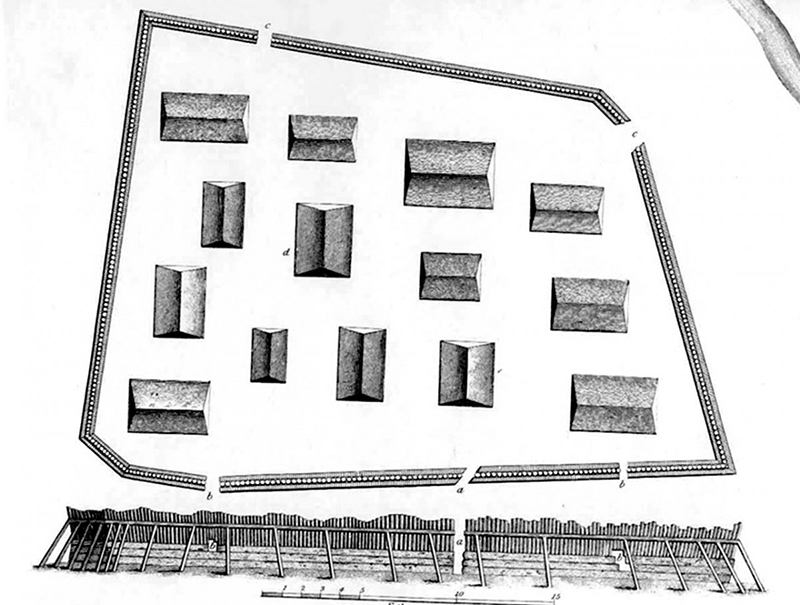The Shís'gi Noow or "sapling fort" was built by the Tlingit people in Alaska at the start of the 19th century: one last physical barrier to advancing Russian forces. Now, thanks to modern-day radar and imaging techniques, it's been rediscovered.
After the pivotal battle there in 1804, which marked the start of six decades of Russian rule, the true location of the Shís'gi Noow had become uncertain – until new research found the fort's unusual perimeter shape in Sitka National Historical Park, at the mouth of Kasda Heen (Indian River).
A team of scientists used both ground-penetrating radar (GPR) and electromagnetic induction to confirm the site of the fort, and to rule out other potential sites in the surrounding area that had been put forward in recent years.
 An outline drawing of the Tlingit fort. (National Park Service)
An outline drawing of the Tlingit fort. (National Park Service)
"The fort's definitive physical location had eluded investigators for a century," says archaeologist Thomas Urban, from Cornell University.
"Previous archaeological digs had found some suggestive clues, but they never really found conclusive evidence that tied these clues together."
Russian forces first arrived in 1799 determined to create an outpost for fur trading, but were repelled by 1802 – which is when the trapezoid-shaped Shís'gi Noow fort was constructed. Battle was rejoined in 1804.
Although the indigenous Tlingit population was armed with guns, cannons and gunpowder from British and American traders, supply line problems meant the Russians claimed the location after five days of fighting. Russian rule was established until the 1867 purchase of Alaska by the United States for US$7 million.
The use of multiple scanning methods is crucial: while a clearing had previously been made in the park where the fort was thought to have stood close to the waterfront, definitive evidence for its exact location was lacking until now.
Different materials – cannonballs, bricks, postholes, loose soil – give different readings to the geophysical tools used by the researchers, enabling them to peer beneath the ground, even in areas of thick vegetation. By mapping out parts of the Sitka National Historical Park as a grid, they were able to narrow down the location of the fort.
"We were able to both confirm a location and rule out other potential locations," says Brinnen Carter, a resources manager and archaeologist at the National Park Service.
"There had been lingering doubts. But this is firm documentary evidence. When you bring remote sensing into it, you're hammering together multiple lines of evidence on identifying where the fort was located."
No other subsurface signatures matched the recognised shape of the fort, and the site matches both traditional Tlingit and Russian accounts of the fighting. This is one of the largest radar and electromagnetic surveys of its type carried out so far in Alaska, covering around 17 hectares (42 acres) in total.
And it shows the potential for GPR and other similar types of technology to uncover archaeological findings that have gone missing for centuries. These scans are turning up everything from Roman towns to Viking ships.
For the Tlingit, this is a sacred historical spot – especially to the Kiks.adi, or Frog clan, whose ancestors defended the site against invaders – and now they can be sure about exactly where that spot is.
"We believe this survey has yielded the only convincing, multi-method evidence to date for the location of the sapling fort, which is a significant locus in New World colonial history and an important cultural symbol of Tlingit resistance to colonisation," says Urban.
The research has been published in Antiquity.
#Humans | https://sciencespies.com/humans/radar-scans-uncover-an-alaskan-fort-built-to-scare-off-russia/
No comments:
Post a Comment